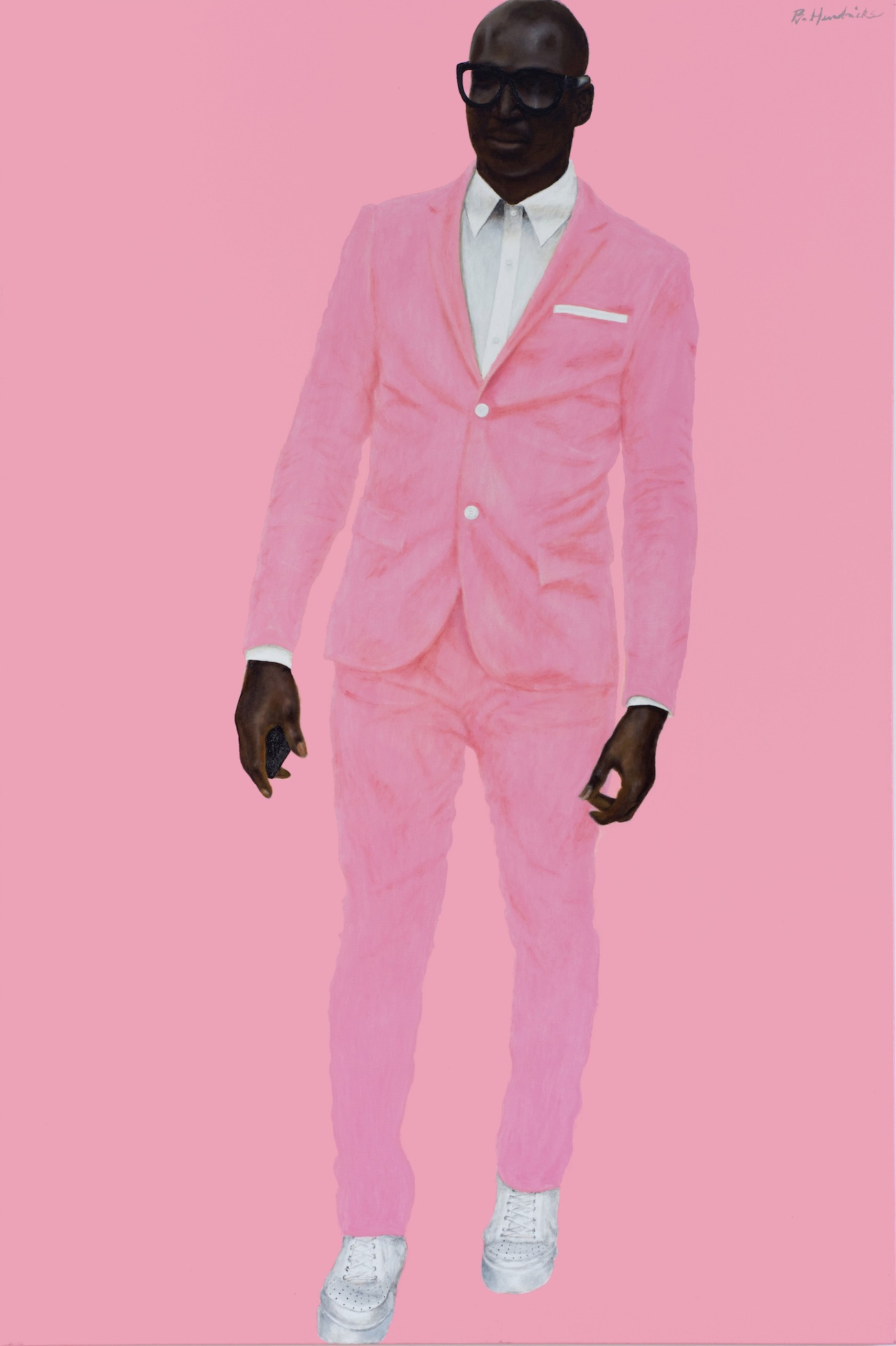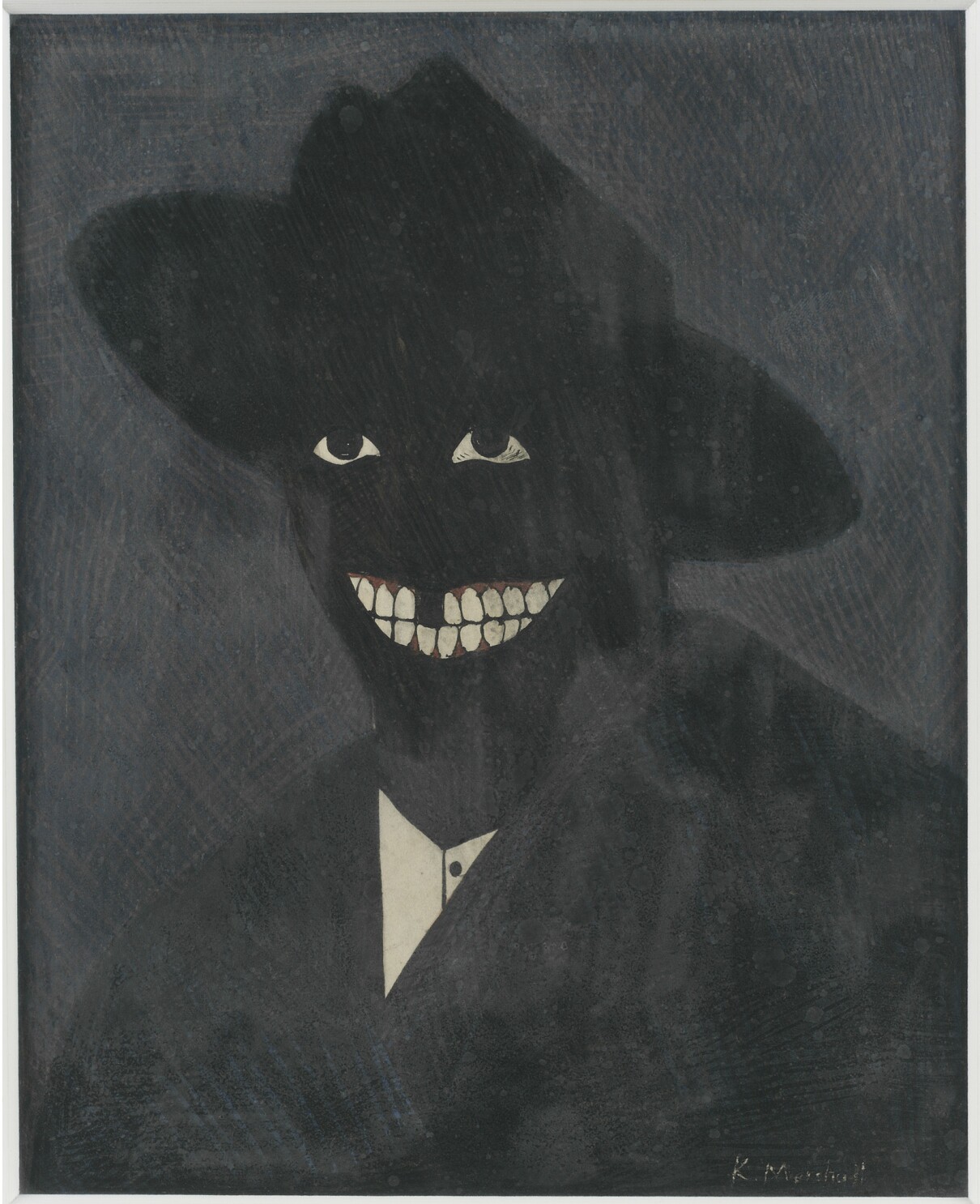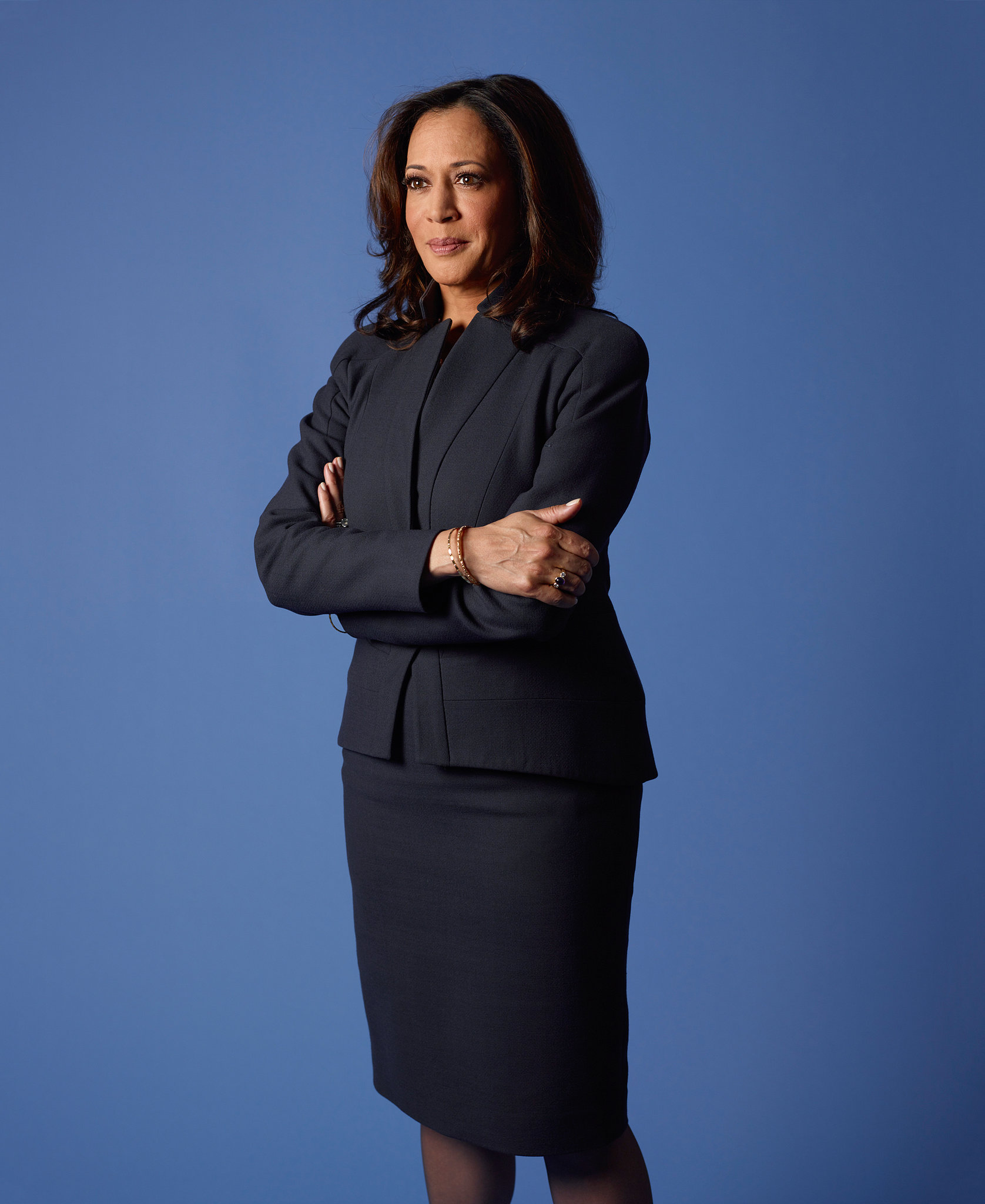 |
| Barkley L. Hendricks, Photo Bloke, 2016. Anonymous collection, Los Angeles |
LACMA has just opened a blockbuster of an exhibition, but it may not be the one you're thinking. The Obamas' portraits are drawing the crowds. Yet you'll spend far more quality time in the unruly accompanying show, "Black American Portraits." It is billed as 200 years of African-American portraits in all media, largely drawn from LACMA's permanent collection.
OK… If you know anything about the museum, you're probably aware that it doesn't have many portraits of Black people. Evidently, a lot has changed in the past few years. About half the works are recent purchases, gifts, or promised gifts. They are joined by some spectacular loans (such as the Barkley L. Hendricks above). There are big, full-figure paintings by Amy Sherald and Kehinde Wiley that (IMHO) are better than the Obama portraits. The selection spans Renee Cox, Njideka Akunyili Crosby, Karon Davis, Roy DeCarava, Emory Douglas, Sam Doyle, Genevieve Gaignard, Charles Gaines, Todd Gray, Titus Kaphar, Jordan Kasteel, Lezley Saar, Lorna Simpson, Henry Taylor, Mickalene Thomas, Tourmaline, and Fulton Leroy Washington (Mr. Wash).
 |
| Unknown artist, Portrait of a Sailor (Paul Cuffe?), about 1800. LACMA |
The installation is very roughly chronological and thematic, starting with one work that may be familiar. It's a c. 1800 Sailor that was regularly shown in LACMA's American galleries (back when they had such things). The identification as Paul Cuffe, a shipping magnate and abolitionist, is speculative. Cuffe's features are otherwise known from a profile silhouette (and this a frontal view). The extreme rarity of the Sailor portrait is underscored by the fact that the installation's chronology jump-cuts to the early 20th century, with works by Samella Lewis, Beauford Delaney, and Augusta Savage. From there it crescendos to a wall of monumental 21st-century works by Barkley L. Hendricks, Sherald, and Wiley.
 |
| Kerry James Marshall, A Portrait of the Artist as a Shadow of His Former Self, 1980 |
There are some definitive self-portraits, including the tiny Kerry James Marshall,
A Portrait of the Artist as a Shadow, that is making its main-campus debut. If I'm not reading too much into it, there is also a sub-theme of water as symbol of both the slave trade and freedom (
Sailor to Sherald's surfers to Calida Rawles to a Compton swimming pool nocturne by Reggie Burrows Hodges). But mainly the show is what the title promises.
Be sure to check out the Obamas, but the marquee attraction here is "Black American Portraits."
 |
| James Van Der Zee, Self Portrait in a Boater Hat, about 1925. LACMA |
 |
| Eldzier Cortor, The Couple, about 1949. Courtesy of Michael Rosenfeld Gallery, New York |
Eldzier Cortor brought a surrealist sensibility to Black life and still life, combined in
The Couple.
 |
| Alice Neel, Horace Clayton, 1949. Promised gift of Mark Gordon Family Collection |
Clayton was a sociologist and writer (co-author of
Black Metropolis: A Study of Negro Life in a Northern City). Not quite all the artists in the show are Black. Besides the Neel, there's a Catherine Opie portrait of Kamala Harris (2016).
 |
| Catherine Opie, Kamala Harris, 2016. LACMA, gift of the artist |
 |
| Anthony Barboza, Amiri Baraka, 1976. National Portrait Gallery, Smithsonian Institution |
 |
| Sam Doyle, Jake, Our Best, 1978-1983. Promised Gift of Gordon W. Bailey |
 |
| Elizabeth Columba, Biddy Mason, 2006. Collection of Maddie McFadden-Lawson and Ambassador Michael A Lawson (ret.) |
 |
| Amy Sherald, An Ocean Away, 2020. Promised gift of Willow Bay and Bob Iger |
 |
| Kehinde Wiley, Yachinboaz Ben Yisrael II, 2021. Promised gift of Rich Paul |
 |
| Jordan Casteel, Jordan, 2020. LACMA, gift of Andrew Xue |
 |
| Titus Kaphar, Behind the Myth of Benevolence, 2014. Collection of Jimmy Iovine and Liberty Ross |
 |
| Reggie Burrows Hodges, Swimming in Compton: Auntie B., 2019. LACMA, gift of Laura and Stafford Broumand |
 |
| Fulton Leroy Washington (Mr. Wash), Shattered Dreams, 2020. LACMA, purchased with funds provided by Aubrey Drake Graham |

















Comments
Then too, the museum on Wilshire probably doesn't have images of black people along the lines of a Clarence Thomas or Fredrick Douglass. Which is fine and all. But the gatekeepers of art and culture need to admit they'd likely honor an Asian named Mao Tse-tung before they'd honor a black American similar to Thomas or Douglass.
Come to think of it, Mao Tse-tung's image is in the Andy Warhol area of the Broad! Then again, Mao was a fine, gracious human being.
Sounds like a "very fine people on both sides" notion.
Rembrandt was a Baroque artist through and through.